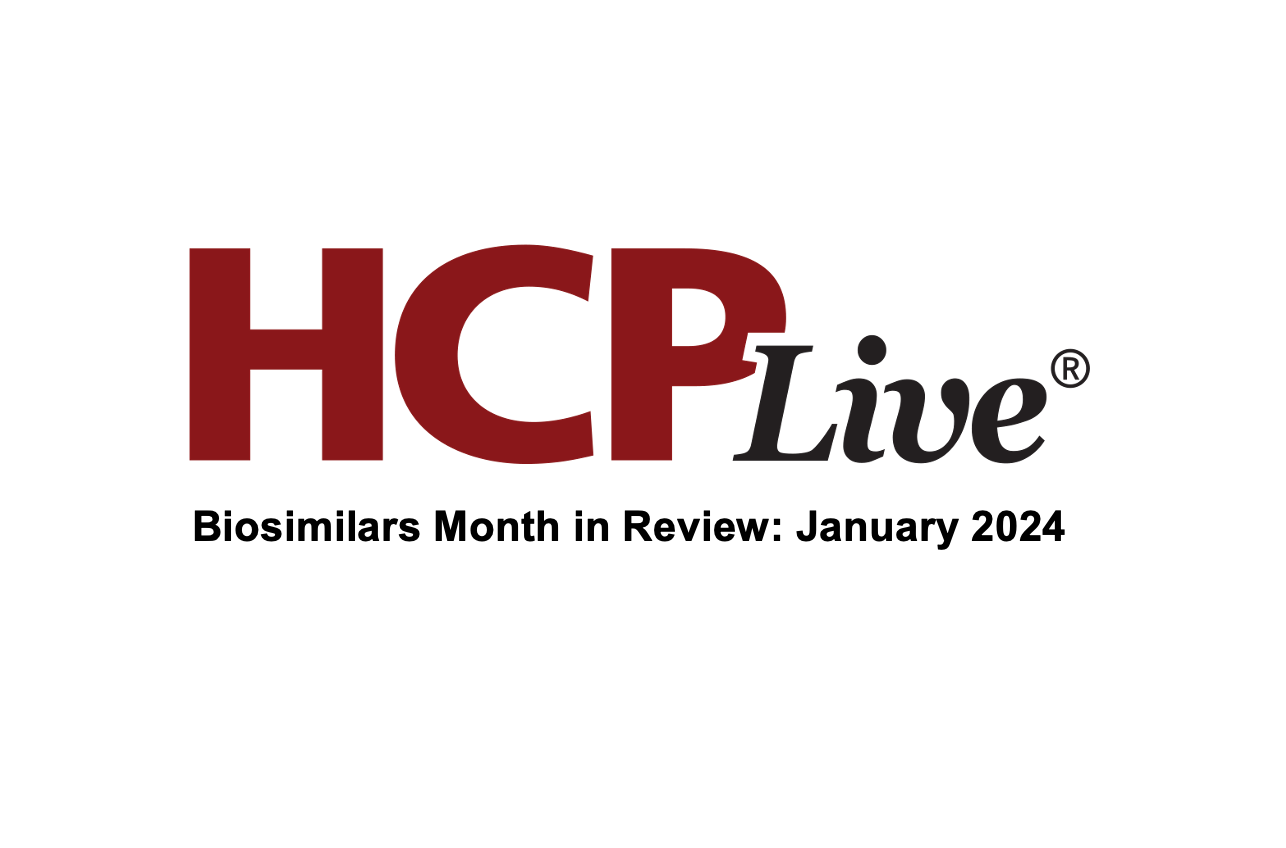News
Article
Biosimilars Month in Review: January 2024
Author(s):

The biosimilars month in review explores the efficacy and safety of biosimilars in treating uveitis, highlights the US Food and Drug Administration (FDA)’s acceptance of a biologics license application for an ustekinumab biosimilar, and emphasizes the safety and accessibility benefits of biosimilars in rheumatic conditions.
Biosimilars for the Treatment of Uveitis
This month, 2 studies evaluated the efficacy and safety of biosimilars in the treatment of uveitis, particularly in patients switching from originator adalimumab to the biosimilar SB5 and in pediatric patients with non-infectious uveitis.
Switch to Adalimumab Biosimilar Shows No Significant Differences for Uveitis
An analysis of eyes with uveitis switched from adalimumab originator to SB5 revealed no significant differences in visual acuity or macular thickness and volume in the switching period, compared with the non-switching period. Overall, the investigative team observed no recurrence of uveitis after switching to the biosimilar.
Upon analysis, lead investigator Se Joon Woo, MD, PhD, an associate professor of ophthalmology at the Seoul National University College of Medicine and Seoul National University Bundang Hospital, and his team identified no significant differences in BCVA, anterior chamber, and anterior vitreous cell grades, and vitreous haze grades at 2-, 4-, and 6-months post-switching, compared with the pre-switching period. In addition, the investigative team found no significant differences in central macular thickness and macular volume at 2- and 6-months post-switching.
TNF-Inhibitor Biosimilars Prove Effective, Safe in Pediatric Non-infectious Uveitis
Real-life data collected from an international medical registry showed tumor necrosis factor (TNF) inhibitors biosimilars are effective at significantly reducing the number of ocular uveitis relapses in pediatric patients with non-infectious uveitis, preserving visual acuity, allowing a significant glucocorticoid-sparing effect, and preventing structural ocular complications.
The observational multicenter ambidirectional cohort study obtained the cohort from the International Autoinflammatory Disease Alliance (AIDA) Registry dedicated to uveitis and Behçet's disease.
The analysis identified the rates of ocular flares in the 12 months preceding the start of biosimilars as 282.14 flares/100 patients/year and 52.34 flares/100 patients/year during biosimilar treatment. Altogether, the relative risk of developing ocular flares in the pre-biosimilar period compared to the biosimilar period was 4.49 (95% confidence interval [CI], 3.38 - 5.98; P = .004). The number needed to treat ocular flares was 3.53.
Exploration and Acceptance of Biosimilars
This month’s articles featured studies evaluating the acceptance and impact of biosimilars in the treatment of autoimmune conditions. The FDA's acceptance of a biologics license application for a ustekinumab biosimilar (DMB-3115) ensures expanded treatment options for autoimmune conditions. Additional studies focused on the safety profile of etanercept and adalimumab biosimilars and how biosimilars contribute to increased access to innovative drugs by generating savings and optimizing resource allocation through policy solutions.
FDA Accepts Biologics License Application for Ustekinumab Biosimilar DMB-3115
In January, the FDA accepted the biologics license application (BLA) for the proposed ustekinumab (STELARA) biosimilar DMB-3115, according to a statement released by Accord BioPharma. The reference product is currently used to treat psoriatic arthritis, plaque psoriasis, ulcerative colitis, and Crohn’s disease.
“The ability of DMB-3115’s reference product, STELARA, to treat autoimmune diseases is well established and we’re excited to take this important step toward providing patients a more accessible avenue to treatment for conditions that present such a significant disease burden,” Chrys Kokino, US president of Accord, said in the statement.
Etanercept, Adalimumab Biosimilars Demonstrate Similar Safety Profile to Originators
A cohort of patients with rheumatoid arthritis, psoriatic arthritis, and ankylosing spondylitis treated with either etanercept and adalimumab or their biosimilar (SB4 and ABP501, respectively) were recruited from prescribing centers in the Lazio region of Italy and data were collected at baseline and after 4, 8, 12, and 24 months of treatment.
At 24 months, the retention rate was 81.1% for patients in the bio-originators group and 76.5% in the biosimilars group (median retention time: 20.7 and 18.9 months, respectively; P = .002). Patients in the biosimilars group who exhibited remission or low disease activity at 4 months had a cumulative survival rate of 90% until 24 months (P = .001). Conversely, early adverse reactions were reported as a cause of subsequent drug discontinuation (P = .001).
Access to Innovative Drugs Increases Through Biosimilars Adoption
In a Polish-based study, the savings generated from biosimilars have primarily contributed to enhancing the availability of higher-priced innovative drugs. To optimize resource allocation based on data insights and foster access to affordable biologics, investigators encourage the adoption of dedicated policy solutions.
The retrospective analysis used information from a nationwide public payer database was performed to evaluated biologic disease-modifying antirheumatic drugs (bDMARDs) and Janus kinase (JAK) among patients with rheumatic musculoskeletal diseases within a 10-year period in Poland.
“Policy should be driven to enhance the total number of bDMARD users through appropriate incentivizing, with reinvestment into reimbursement of less costly and other innovative agents at least to the same extent,” investigators concluded. “Lessons from Poland can help other countries that are at an earlier stage of biosimilars entrance for effective solutions implementation to take full advantage of their access.”





